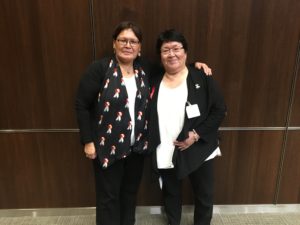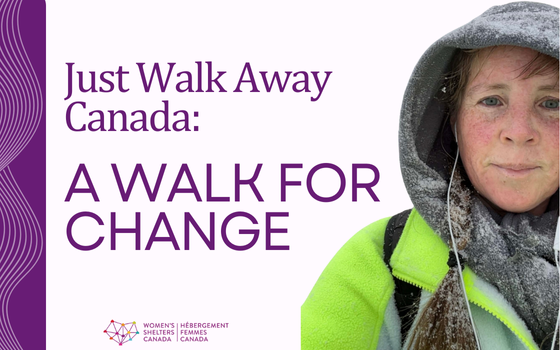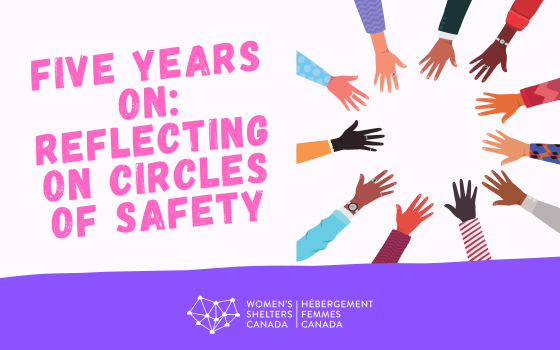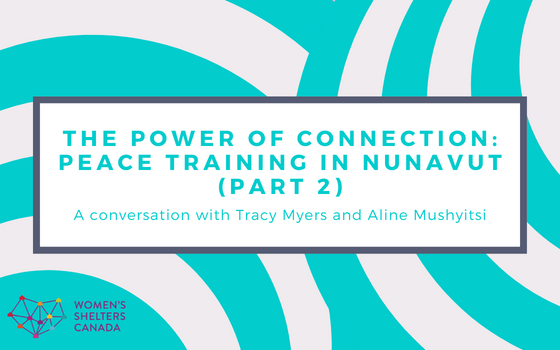Sometimes advocacy really does work! Women’s Shelters Canada has been advocating for the Standing Committee on the Status of Women to hear from more Indigenous women’s organizations, after only one such organization appeared as a witness during the nine scheduled meetings. As mentioned in our last blog, Sheila Malcolmson (NDP) brought forth a motion to the Committee to add an additional meeting specifically for Indigenous women witnesses.
On Monday, December 3, the Standing Committee held that extra session on its study of VAW shelters and transition houses specifically to hear from Indigenous women’s organizations. The session was split into two one-hour slots: the first hour had witness presentations from Josie Nepinak, Executive Director of Awo Taan Healing Lodge Society, and Viviane Michel, President of Quebec Native Women Inc. The second hour saw witness statements from Sharmila Chowdhury, Transitional Support Worker at Minwaashin Lodge and Rebecca Kudloo (President) and Samantha Michaels (Senior Policy Advisor) of Pauktuutit Inuit Women of Canada.
All four witnesses gave compelling testimony about the situation for Indigenous women and girls fleeing violence, both on and off reserve. Some of the key quotes from the testimony are highlighted below:
Rebecca Kudloo: “The Minister of Status of Women, Maryam Monsef, was mandated to ensure that no one fleeing domestic violence is left without a place to turn, by growing and maintaining Canada’s network of shelters and transition houses. Despite this, violence against Inuit women and girls remains a systemic national crisis that requires urgent, informed and collaborative action. At the rate of 14 times the national average, the highest rate experienced by any group of women in Canada, violence is a preventable leading cause of injury and mortality in Inuit women. Family violence is compounded by poverty, unemployment, substance abuse, overcrowded housing, and suicide rates that are estimated to be nine to 20 times the national average.”
Josie Nepinak: “I often believe that in three weeks we expect miracles to happen, which is not fair to the women and children who come in. Typically with indigenous families, the woman is in her mid-twenties. She usually has three children. We require her to find housing, within the 21 days, and income support. If there are issues around child welfare or emergency protection orders, or just keeping her life intact in those three weeks. Living in a communal type of facility, such as a shelter that has rules, is very difficult at times.”
“The funding is so different for the First Nation shelters on the reserve, where shelter directors actually have had to bring groceries from their own cupboards to feed the women and children in the shelter, which is terrible.”
Sharmila Chowdhury: “I’d like to point out that Oshki Kizis Lodge is the only shelter for indigenous women fleeing abuse in all of eastern Ontario. We get first nations, Métis and Inuit women from across Canada and from the remote northern communities and reserves. Often they flee because—as I think was mentioned in another panel before us—there is a lack of confidentiality and safety in the smaller communities. A lot of the shelter and community workers are their aunts or their cousins, and they don’t have real anonymity to get away from the abuse, so that’s how they sometimes end up in Ottawa, a bigger city with a little more anonymity….There are examples of women coming from across the country. There was a woman coming from out west who tried to flee her abusive partner. She went to Calgary, I think, and then just made her way eastward, but he kept finding her. She finally landed in Ottawa, where, to this day, he hasn’t found her. There’s that anonymity here in Ottawa that women sometimes are seeking.”
And finally, a list of recommendations from Viviane Michel: “Our first recommendation is to provide core funding to Réseau des maisons d’hébergement pour femmes autochtones, our network of shelters for Indigenous women. This would allow for training and information sharing among Indigenous shelters, on a par with the Regroupement des maisons pour femmes victimes de violence conjugale and the Fédération des maisons d’hébergement pour femmes au Québec.”
Her other recommendations were:
- To expand shelter services to better reflect the needs, realities, culture and traditions of indigenous women experiencing domestic violence and spousal abuse.
- To establish services for men who are violent or experiencing violence themselves. They need to be part of the healing process for indigenous nations.
- To give communities additional human resources to address domestic violence and spousal abuse.
- To develop inter-organizational memoranda of understanding between Indigenous and non-Indigenous shelters and such partners as police, social service agencies, the youth protection branch and other relevant authorities.
- To educate Indigenous women on the legal system as it relates to domestic violence and spousal abuse, including legal guidance and assistance with complaints.
- To make a range of tailored services available to Indigenous women experiencing domestic violence and spousal abuse and thus ensure they have a safety net.
- To allocate more financial resources to Indigenous police forces for the purposes of training and female officer recruitment.
- To allocate resources to specifically support the families of missing and murdered Indigenous women.
- To launch an awareness campaign to educate and support female seniors who experience violence in all forms.
The Committee will now be writing their report on this study of VAW shelters and transition houses. We will share this report on social media when it comes out (follow us on Facebook and Twitter @endvawnetwork).
Meeting 10: Listen to the audio of the full 2 hour meeting here
Or read the testimony here






Leave A Comment
You must be logged in to post a comment.